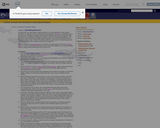
In this simulation activity, students will examine natural selection in a small population of wild rabbits.
- Subject:
- Biology
- Science
- Material Type:
- Activity/Lab
- Provider:
- PBS
- Author:
- WGBH
- Date Added:
- 02/26/2019

In this simulation activity, students will examine natural selection in a small population of wild rabbits.

In this simulation activity, students will collect data, formulate a hypothesis, and run a series of experiments in order to discover the interplay between natural selection and sexual selection in a wild population of guppies.

This brief video clip demonstrates how to create a hovercraft from simple materials. Toward the end of the clip, the students in the video explains the science behind the hovercraft's motion (reduced friction). Students are encouraged to continue the experimentation on their own by changing variables in the design of the hovercraft.

This brief video segment explores the question of sexual versus asexual reproduction through a discussion of a parthnogenic species of salamander.
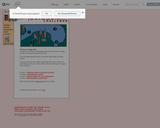
This resource requires students to test their engineering skills and try to match the right bridge to the right location.
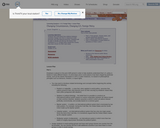
In this lesson, students will understand how the relationship between countries change over time in response to both domestic and international pressures. Students will be able to identify and discuss the factors that conTribute to U.S. foreign policy toward the country they have chose for their case study.

In this virtual lab, students create a DNA fingerprint and then compare it to those of seven suspects to solve a crime.

In this lesson, students watch videos about self-acceptance and forgiveness and then explore how these qualities relate to leadership potential.

In this media gallery, a series of videos examines the mathematical concepts of mean, median, mode, and range. The accompanying classroom activity asks students to build on what they’ve learned by playing a game called "Sure Shots." In this game, students are directed to find out how many attempts it takes, on average, to get a pom-pom into a can. Students make a series of attempts and collect the data. Then, after a group discussion, they take the data and determine the mean, median, mode, or range

In this lesson, students collect data and create maps to observe the relationship among volcanoes, earthquakes, and lithospheric plates.

This video and support materials focus on using what you know about place value to determine what each digit represents in a number that extends to the hundredths place. Find the value of digits by exploring the number 342.98.
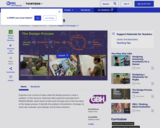
Engineers use a series of steps called the design process to solve a problem. In this resource, featuring video segments excerpted from DESIGN SQUAD, watch teams of kids work through each of the five steps of the design process: 1) identify the problem; 2) brainstorm; 3) design; 4) build, test, evaluate, and redesign; and 5) share solutions.
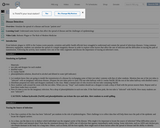
In this lesson, students simulate the spread of a disease and locate "patient zero." They will understand factors that affect the spread of disease and the challenges of epidemiology. Using common laboratory equipment, students will simulate the spread of a simple imaginery disease in order to explore infection and the difficulties of tracing the path of transmission.

In this lesson, students practice time management by making their own schedules. They learn to calculate elapsed time in both digital and analog formats.

In this lesson, students use problem-solving skills to design tower structures out of a variety of materials. Students will compare properties of the materials as they select appropriate ones for their structures.

In this lesson, students explore a variety of recycled mateirals and use them to create and build a 3-D sculpture. Students will compare properties of the materials as they select appropriate ones for their projects.
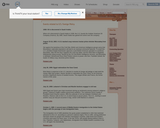
This resources can be viewed as an interactive (using Flash) or as a print timeline with dates and summaries on events relating to U.S. foreign policy. Periods are divided beginning with beginning with pre-1900 and ending with 2000-2002.
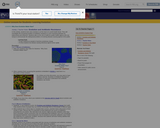
In this activity, students learn why evolution is at the heart of a world health threat. They will investigate the increasing problem of antibiotic resistance in such menacing diseases as tuberculosis and influenza. Students take on the role of staff at a public health agency who are trying to communicate the widespread problem of evolving disease-causing agents to the public.

In this interactive, students use logic and mathematical skill to place aquatic animals at locations on a Cartesian graph with cardinal directions. Then, they determine both the vertical and horizontal distances between points. The riddles in the interactive, including one that requires an understanding of rate, have randomized values so that students can practice placing points at different locations and calculating different distances. The accompanying classroom activity provides a review of concepts related to determining the distances between points on a Cartesian graph and a response sheet to help students work with the interactive

In this interactive, students use clues and logic to plot the location of aquatic animals on a Cartesian graph that represents the four cardinal directions. The three riddles in the interactive, including one that requires students to understand rate, have randomized values so that students can practice placing points at different locations on the graph. The accompanying classroom activity provides students with a review of locating points on a Cartesian graph. A response sheet helps students work with the interactive.